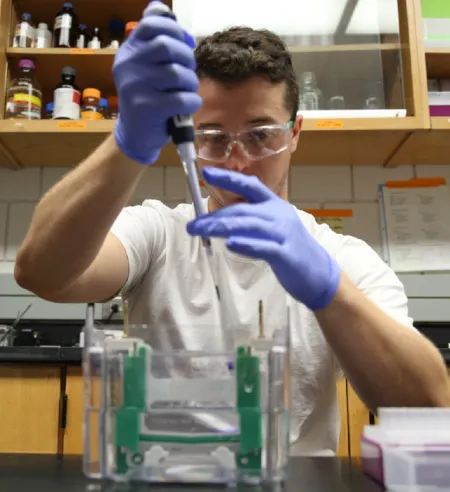Potential research opportunities with our faculty encompass a broad range of chemistry fields, including biochemistry, organic chemistry, theoretical chemistry, inorganic chemistry, environmental chemistry and materials science. And most importantly, since our focus is solely on undergraduate students, you'll have the chance to be centrally involved in our research activity from the very beginning.
Check out the faculty pages for specifics on our research programs.
